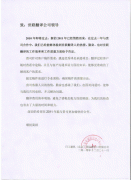上海翻译公司完成体育类英文翻译
时间:2018-02-18 18:54 来源:未知 作者:dl 点击:次
上海翻译公司完成体育类英文翻译
18 Putting It Together In this part of the book, we’ll integrate the elements from the preceding parts.The following chapters look at recovery routines to target various training and race distances. Depending on your age, your history with the sport, the effort expended in the race, and the sport itself—specifically, how much running it involves and hence how much impact it places on your legs—your own recovery choices and the amount of time your recovery takes can vary widely. Remembering that time is the most important recovery tool, let’s take a look at factors that contribute to your recovery time. One rule of thumb used for running dictates running easy for X days after your race, where X is the number of miles run. But we can finesse this further (and include other sports beyond running) by basing time to recover on time spent racing. U.S.Olympic triathlon coach Gale Bernhardt estimates that a bike race requires 1–3 days per hour of racing done, a triathlon requires 3–5 days per hour of racing done, and a running race requires 4–6 days per hour of racing done. My experience, and those of my athletes, bears this out, and it’s a much more broadly applicable scale than the usual rule of thumb that metes out a day of recovery for each mile run in a race. The tables in Appendix B specify how the conversions given above would apply to various common race distances and times. Bernhardt also created a table weighting the subjective factors that affect time to recover after a race. Working from Table 18.1, you can further predict the time until full recovery by seeing how many scores you have in the 2 and 3 columns. The more you have, the longer you can expect recovery to take. If you wind up injured or sick after the race, that further prolongs your recovery time—perhaps even beyond the slower-recovery range given in Tables B.1–B.4. Looking at the table, you’ll know whether to expect recovery to slide toward the shorter or the longer end of the scale. You’ll see from Bernhardt’s table the importance of managing stress both before and after the race, and the importance of nutrition before, during, and after the race. These are factors within your control. Also within your control, with some long-term planning, is your training: the level of conditioning you bring to the race, the care you take in your taper, and your effort on race day, which most directly affects recovery time. Wise progression over a career will build your athletic experience in the sport and your ability at various distances, as well as your ability to eat and drink and pace yourself correctly during the race. While weather conditions are obviously out of your control come race day, the workouts you do in the week after the event are surely in your control. Don’t jettison your recovery by rushing back to training too quickly. Managing these controllable factors is the sign of a well-balanced athlete. If you can keep your nutrition up, your stress down, and your training progressive and balanced, you’re likely to recover well. As physiologist Bill Sands told me, “There is nothing powerful enough in the recovery area to overcome stupid coaching, bad planning, and no talent. Periodize properly,train intelligently, eat right, and have a smart coach.” Once you have these lifestyle elements in balance, you can focus on the other recovery techniques covered in Part 2 of this book to enhance your recovery. In the final chapters of this book, we’ll see how these techniques might fit into a timeline. Remember that your recovery is relative to your experience. Jamie Donaldson, first female and third overall at the 2010 Badwater ultramarathon, remembers: “When I first started ultras, it took me months to recover. For example, when I did the Badwater ultramarathon in 2007, I couldn’t even run for a month afterward. In 2009, I completed Badwater and was able to run competitively in the Leadville Trail 100 mile less than three weeks later.The training you put in ahead of time is almost as important to your recovery as to what you do after the race.” Your body will respond to the demands of the event relative to your past experience, whether you ever achieve elite status like Donaldson’s. This means that the guidelines in Tables B.1–B.4 are merely that—guidelines. Gordo Byrn, endurance coach and coauthor of Going Long, agrees. “Recovery after races is really individual,” he says. “Someone under a lot of life stress might take six months to recover from a half-Ironman, while an elite athlete might be back to relatively normal training in four or five days.” The more your body is conditioned to the demands of your sport and the more times you go through the routines of recovery, the quicker your body will adapt and respond and the sooner you will be ready to resume training to a point. As you age, you’ll need to take care to follow your body’s cues. What worked five years ago might not be enough now; recovery times will lengthen as you age. Elements to Include Year-Round Beyond the time you spend following the protocols listed in the next two chapters, here are some elements that will aid your recovery and your training, along with a suggestion of frequency. Choose the elements that apply to you and that you can keep up with regularly. Daily ●Log your workouts and recovery metrics. ●Make a point to spend time focusing on elements besides training. ●Nap and/or focus on getting enough nightly sleep. ●Eat a healthy, varied diet. ●Drink tart cherry juice, 8–16 ounces. ●Take an omega-3 supplement, about 1,000 mg of EHA/DHA combined, or 1 tablespoon flaxseed, or 1 teaspoon flaxseed oil. ●Draw a warm bath, with Epsom salts if you like. ●Make time for meditation and/or restorative yoga poses, especially legs up the wall. Weekly ●Check in with your log, realigning with your goals and assessing overall stress level. Tweak as needed. ●After hard workouts, put on recovery socks and use the NormaTec, if you have access to one. ●Sit in the whirlpool briefly; space your visit far apart from hard workouts. ●Perform self-massage 3–4 times a week. ●Schedule a massage with a therapist weekly or biweekly,depending on needs and budget. ●Do a longer, restorative yoga session 2–3 times a week at home or at a studio. Monthly ●Meet with a sports psychologist to discuss your goals and mental skills. ●Meet with a sports dietitian to discuss your nutrition. Quarterly ●Check that your running shoes are in good shape; if not, replace them. Semiannually ●Assess your bike fit and equipment, especially if you have changed elements of your training. ●Have your technique analyzed by a coach, especially in swimming. Annually ● Get a complete physical, ideally from a health care provider familiar with athletes. Recovery Between Seasons The chapters that follow show what to do in the few hours and days after a tough workout or a race. Beyond that, you must allot even more time for deep physical and mental recovery after your peak race of the season. If you are always turning around and moving straight into the next cycle, you will never achieve long-term recovery, and eventually you will shortchange your performance. Take at least one week, possibly two together, after your peak event of the year. (Better still, have two transition weeks, one after your spring peak and one after your fall peak.) During this transition time, break out of your usual habits. You might choose to try a different sport or only to walk. Recharging your batteries, both physiologically and psychologically, will ensure that you continue to enjoy your training in the next cycle and that you come to your next cycle with the appropriate mental and physical resources. Create as much distance from routine as you can in this transition period. It might coincide with a vacation—a chance to spend more time with your family and friends—or you might simply keep your bike packed in its travel box or propped in the garage, your running shoes hung to dry. Here are some cues from ultrarunners, whose peak events are run on a grand scale and thus demand a grand attention to recovery. Kami Semick told me, “Since the ultra season is so long, I take an annual break away from running. During this break period, I will take a few days of complete rest (typically after my last race of the season), then for three or four weeks, I will primarily ski for fun (Nordic and downhill), and pool run. For a total of four to six weeks, I will not do any quality running efforts and I will keep my runs below two hours.” Restoration happens not only on the physical level. Consider the psychological elements of recovery between long events, too. Ultrarunner Annette Bednosky, women’s winner at the 2010 Burning River 100 Mile Endurance Run, says, “Recovering from a focus race is about taking time off mentally as much as physically. For instance, [in early 2010] right after Mad City, I did jump right into an ice bath for a fifteen-minute soak accompanied by a glass of wine and then a nap. For the next week, I tried not to think about running, racing, or future training. I exercised each day—doing different things—yet it was important not to have any sort of performance or training focus.” Runner’s World editor Jennifer Van Allen agrees, and she underscores the point that you must be in tune with your goals and your body so you can give yourself what you need, rather than following a prescribed formula to etermine when you will be recovered. “I never quite follow the mile-per day rule; I listen to my body and figure out what I need,” she says. “After I run a race, I’m so excited, my love for running is at its height; it’s the time when I want to run the most, and my body will not cooperate. It’s tough for me to hold back. I have to coach myself to not get out there, because that’s when I’m most fragile.” Van Allen learned this from experience, when she ran four marathons in four consecutive weeks in the fall of 2009. “The morning after the Richmond Marathon, I wanted to get moving,” she remembers. “I went out, and I was so enjoying my run in downtown Richmond but I wasn’t movingreally well. My gait was sloppy. I tripped over cobblestones and cut my face and elbows. That’s a small example of the danger of doing more than I was ready for.” How long should this interseason recovery period last? Here’s an easy rule: Look at the number of hours you trained in your peak week of volume and take that many days free of structured training objectives. If you maxed out at 7 hours a week, an easy week without formal workouts should suffice. If you regularly train 20 hours a week, though, you will do well to take a full three weeks’ mental break. As with everything, however, your recovery time depends on your history and goals. A week or two might do after a shorter event; it might take a month or more to regain interest in training after a longer race. Consider all the stories of people who don’t ride again for months following an Ironman (my own story among them—I transitioned from the Ironman into a distance-running block that included the New York Marathon and a 50K, and my bike hung unused on the garage wall). This is not a training failure, as long as you have a reasonable race schedule that won’t have you out again too soon, and provided that you are staying active in other sports. It’s evidence that you’re listening to your body’s needs and training because you feel passionate about it. When that is your guiding principle, you’ll have balance in your life, and training will enhance your experience—not dominate it. 上海翻译公司完成体育类英文翻译 世联翻译-让世界自由沟通!专业的全球语言翻译供应商,上海翻译公司专业品牌。丝路沿线56种语言一站式翻译与技术解决方案,专业英语翻译、日语翻译等文档翻译、同传口译、视频翻译、出国外派服务,加速您的全球交付。 世联翻译公司在北京、上海、深圳等国际交往城市设有翻译基地,业务覆盖全国城市。每天有近百万字节的信息和贸易通过世联走向全球!积累了大量政商用户数据,翻译人才库数据,多语种语料库大数据。世联品牌和服务品质已得到政务防务和国际组织、跨国公司和大中型企业等近万用户的认可。 |























